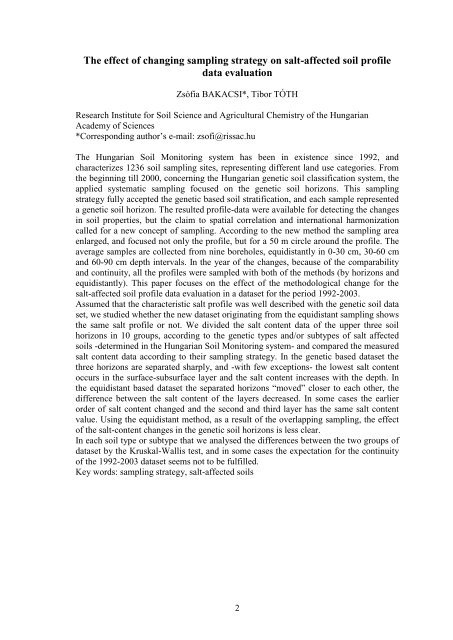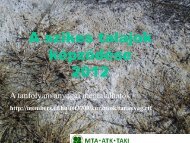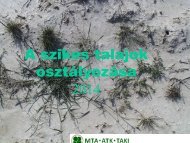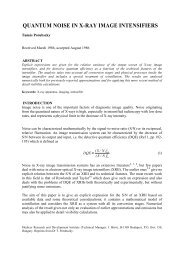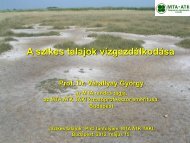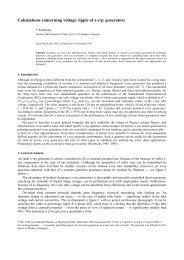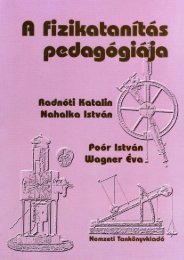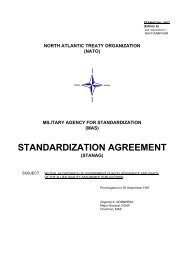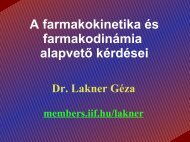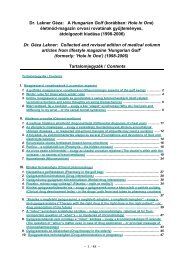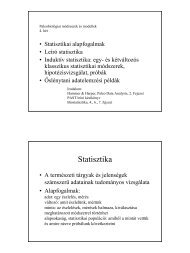Abstract form
Abstract form
Abstract form
You also want an ePaper? Increase the reach of your titles
YUMPU automatically turns print PDFs into web optimized ePapers that Google loves.
The effect of changing sampling strategy on salt-affected soil profile<br />
data evaluation<br />
Zsófia BAKACSI*, Tibor TÓTH<br />
Research Institute for Soil Science and Agricultural Chemistry of the Hungarian<br />
Academy of Sciences<br />
*Corresponding author’s e-mail: zsofi@rissac.hu<br />
The Hungarian Soil Monitoring system has been in existence since 1992, and<br />
characterizes 1236 soil sampling sites, representing different land use categories. From<br />
the beginning till 2000, concerning the Hungarian genetic soil classification system, the<br />
applied systematic sampling focused on the genetic soil horizons. This sampling<br />
strategy fully accepted the genetic based soil stratification, and each sample represented<br />
a genetic soil horizon. The resulted profile-data were available for detecting the changes<br />
in soil properties, but the claim to spatial correlation and international harmonization<br />
called for a new concept of sampling. According to the new method the sampling area<br />
enlarged, and focused not only the profile, but for a 50 m circle around the profile. The<br />
average samples are collected from nine boreholes, equidistantly in 0-30 cm, 30-60 cm<br />
and 60-90 cm depth intervals. In the year of the changes, because of the comparability<br />
and continuity, all the profiles were sampled with both of the methods (by horizons and<br />
equidistantly). This paper focuses on the effect of the methodological change for the<br />
salt-affected soil profile data evaluation in a dataset for the period 1992-2003.<br />
Assumed that the characteristic salt profile was well described with the genetic soil data<br />
set, we studied whether the new dataset originating from the equidistant sampling shows<br />
the same salt profile or not. We divided the salt content data of the upper three soil<br />
horizons in 10 groups, according to the genetic types and/or subtypes of salt affected<br />
soils -determined in the Hungarian Soil Monitoring system- and compared the measured<br />
salt content data according to their sampling strategy. In the genetic based dataset the<br />
three horizons are separated sharply, and -with few exceptions- the lowest salt content<br />
occurs in the surface-subsurface layer and the salt content increases with the depth. In<br />
the equidistant based dataset the separated horizons “moved” closer to each other, the<br />
difference between the salt content of the layers decreased. In some cases the earlier<br />
order of salt content changed and the second and third layer has the same salt content<br />
value. Using the equidistant method, as a result of the overlapping sampling, the effect<br />
of the salt-content changes in the genetic soil horizons is less clear.<br />
In each soil type or subtype that we analysed the differences between the two groups of<br />
dataset by the Kruskal-Wallis test, and in some cases the expectation for the continuity<br />
of the 1992-2003 dataset seems not to be fulfilled.<br />
Key words: sampling strategy, salt-affected soils<br />
2


